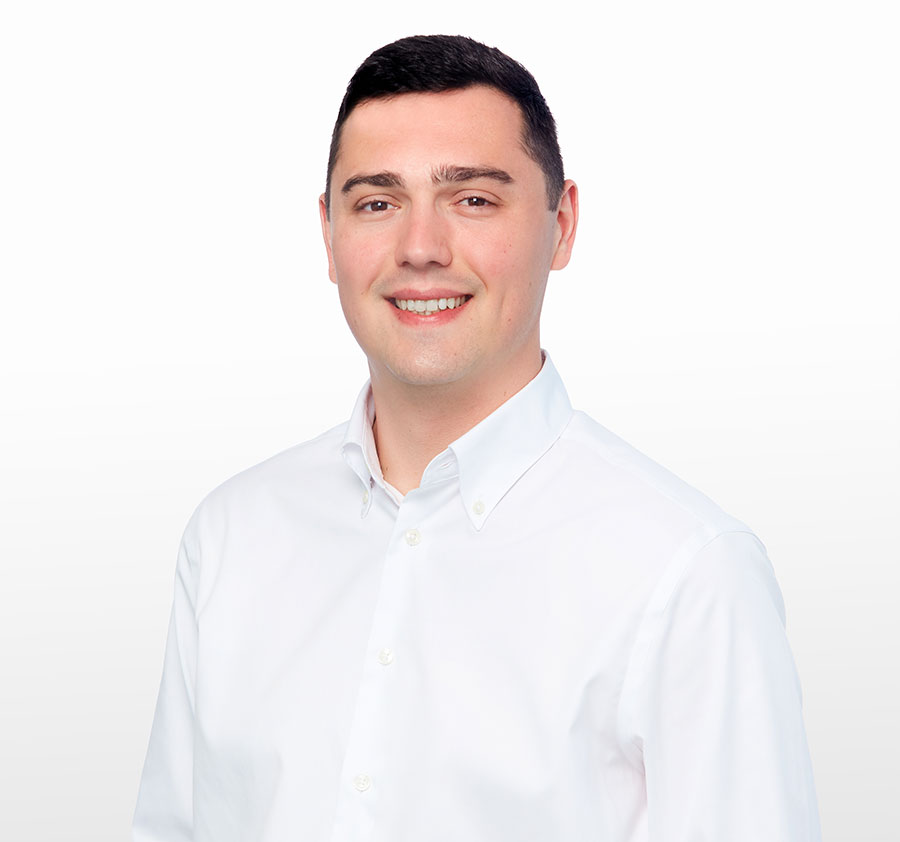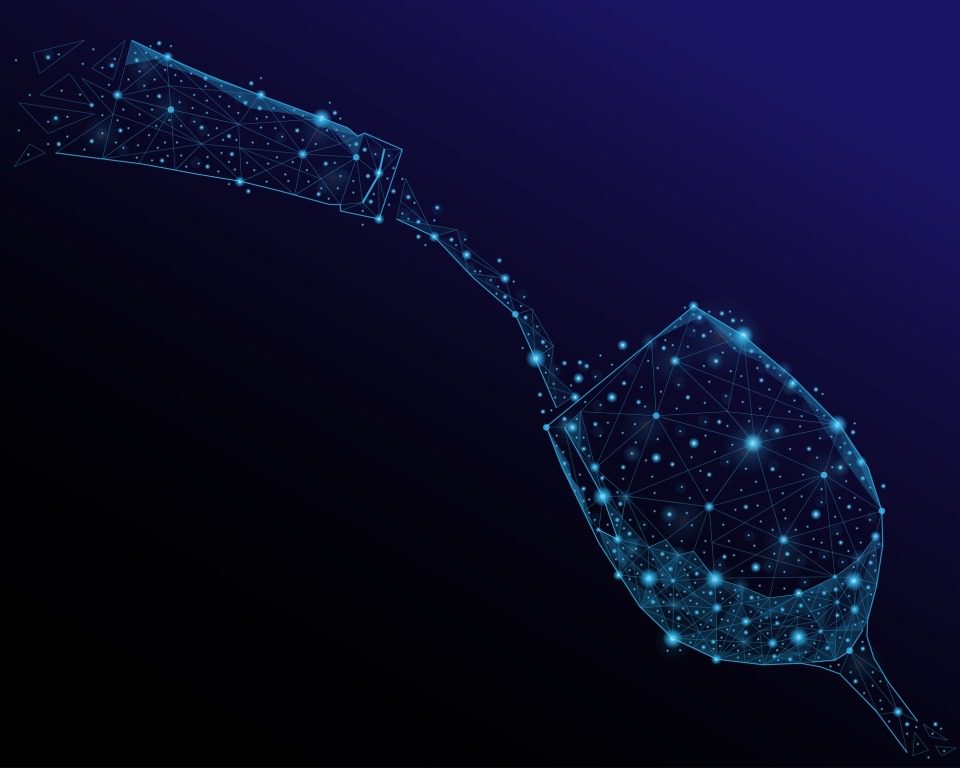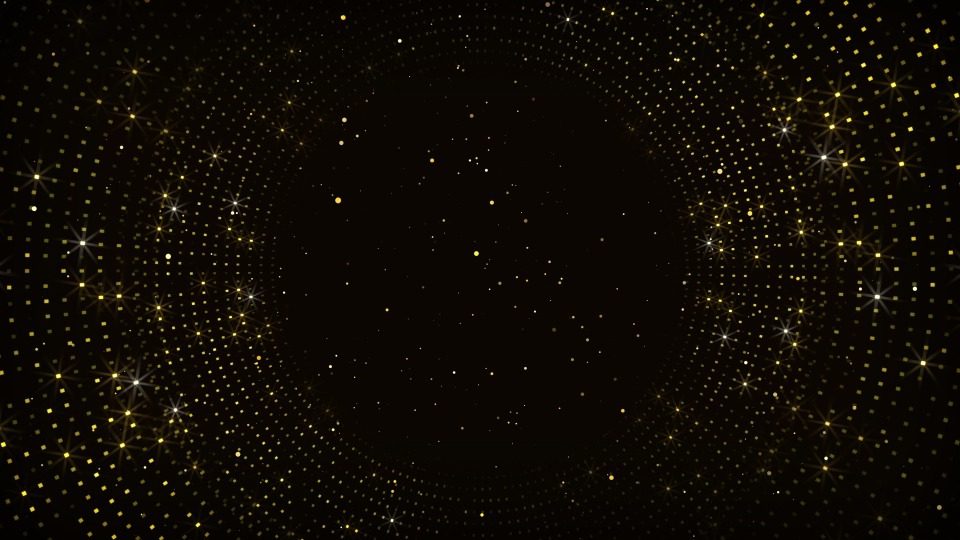About the authors
Parminder Lally is a senior associate at Appleyard Lees IP LLP. Parminder specialises in drafting and prosecuting patent applications for computer-implemented inventions. She has built a substantial reputation working with high-growth start-ups, spin-outs and SMEs in Cambridge, and has in-house experience.
Tom Gregory is a trainee patent attorney at Appleyard Lees IP LLP. Tom’s work is primarily focused on the mechanics and electronics sectors. He also has valuable experience in computer-implemented inventions and software. Tom’s recent work has been for clients in the aerospace and electronic consumer goods industries, and for university research departments across various fields of innovation.
Parminder and Tom are part of a team of AI patent specialists at Appleyard Lees.
We often hear people say that it’s easier to get software patents granted in the U.S. than Europe, but is there any truth to this statement?
In this article, we compare the requirements to obtain patents in the U.S. and Europe in the context of computer-implemented inventions such as simulation methods and artificial intelligence (AI). In particular, we look at how patent eligibility and inventiveness are assessed on both sides of the pond, and we show that although the USPTO and EPO have different assessment approaches, the end result is often very similar. We also provide some tips that could help you to obtain quick, detailed feedback on your computer-implemented inventions that could inform your global patent filing strategy.
1) Patent eligibility – does your innovation relate to something that can be patented?
Both U.S. and European patent law sets out the types of innovation or subject matter that can or cannot be patented. We take a look at the two jurisdictions in turn below, in the context of a patent application that has attracted a lot of attention in Europe: EP03793825.5.
European patent application EP03793825.5 (published as EP1546948) relates to the modelling and simulation of movements of a pedestrian, and a crowd, in an environment such as a building, which enables the safety of a building design to be verified. The patent application has attracted attention because it was the subject of a decision of the Enlarged Board of Appeal of the European Patent Office (EPO) relating to the patentability of simulations. Read more about that decision in our previous article.
There are corresponding U.S. patents. U.S.7,188,056, which granted in March 2007, is the priority application for this patent family, and U.S.7,389,210, which granted in June 2008, is a U.S. national phase application from a PCT application. The European case is also a national phase application stemming from the same PCT application. So, why is the European case still pending while the U.S. cases granted over a decade ago? Let’s see if the patent eligibility assessment explains the difference.
1a) Europe
In Europe, as shown in the diagram below, the first hurdle to overcome to obtain a patent is to determine whether your innovation is considered to be an invention.

European patent law explicitly excludes certain things from being considered inventions, which thereby prevents them from being patented. For example, mathematical methods, methods for performing mental acts or doing business, and programs for computers are explicitly not considered inventions in Art. 52(2) of the European Patent Convention. However, as illustrated in the diagram above, it is usually straightforward to overcome this patent eligibility hurdle at the EPO. EP03793825.5 is a good example of how an objection on this ground can be overturned relatively easily.
In the first Examination Report issued by the EPO on EP03793825.5, the method of independent claim one was objected to on the grounds that it consisted of a series of “purely abstract” steps. Although claim one related to “a method of simulating movement of an autonomous. entity through an environment”, no use of any technical means (i.e. a computer) to perform the method was explicitly recited or implied in the claim. Consequently, the EPO argued that the whole method could be performed mentally. As mentioned above, any method that can be performed mentally is not considered to be an invention.
In response, the Applicant’s representatives amended claim one to recite a “computer-implemented method”. This amendment made it clear the method was being performed using a computer, and so the “mental act” objection disappeared.
The wording “computer-implemented method” also avoided the EPO stating that the amended claim was directed to a program for a computer which, as noted above, is also not considered to be an invention. Computer programs are only excluded from patentability if they are claimed as such – the exclusion does not apply to programs that have “technical character”.
For something to have technical character it must relate to a technical field, must be concerned with a technical problem, and must have technical features in terms of which the matter for which protection is sought can be defined in the claim. Claims directed to a computer-implemented method, a computer-readable storage medium or a device involve the use of technical means, such as a computer.
Furthermore, in the context of AI and machine learning (ML), whilst the computational models and algorithms on which AI and ML are based are per se excluded from patentability, their application to various fields of technology often allows technical character to be established. As an example, the use of a neural network in a heart-monitoring apparatus for the purpose of identifying irregular heartbeats makes a technical contribution and would not be excluded from patentability.
Thus, overcoming the patent eligibility hurdle at the EPO is generally straightforward.
1b) The U.S.
U.S. patent law sets out the following categories as exceptions to invention, known as the judicial exceptions: abstract ideas, laws of nature, and natural phenomena including products of nature.
The exception most relevant to computer-implemented inventions is that of an “abstract idea”. The U.S. Supreme Court’s landmark 2014 decision, Alice v. CLS Bank, had the effect of broadening the range of claimed inventions deemed to be “abstract ideas”. Abstract ideas include mathematical algorithms and formulae, computer programs, methods of organising human activity, and mental processes. Thus, inventions which involve simulations or modelling may be considered to be mental processes and therefore, abstract ideas.
The mathematical models and algorithms on which AI and ML inventions are based would likely also be deemed “abstract ideas”. Up until this decision, as mentioned above, it had been possible to get patents in the U.S. for almost any software invention, but since 2014 it has become more difficult. However, it is clear that the list of inventions that are considered to be abstract ideas and patent ineligible are similar to the list of exclusions in European patent law. Thus, since the Alice decision, the U.S. has moved closer to European practice when it comes to patent eligibility. However, the U.S. has not moved closer to European practice in terms of overcoming the patent eligibility hurdle.
The claimed invention can qualify as patent-eligible subject matter by not being directed to the above exceptions. For example, a claimed AI invention which is limited based on or involving mathematical concepts, but does not recite only the mathematical concept, can avoid the abstract idea exception. If the claimed invention is directed to a judicial exception, the claimed invention can still qualify as patent-eligible subject matter if the claim as a whole includes additional limitations amounting to significantly more than the exception.
We will not discuss the two-part test used by the USPTO to assess patent eligibility in detail here. However, we note that in the U.S., simply stating that a method is “computer-implemented” is not sufficient to overcome the judicial exception. It is necessary to demonstrate at this stage that the claimed invention provides something more. For example, if the claimed software invention provides an improvement to the functioning of the computer on which it is run, then the software invention may amount to significantly more than an abstract idea. Thus, in contrast to the EPO, the patent eligibility hurdle is high at the USPTO.
As noted above, the two U.S. patents corresponding to EP03793825.5 were granted in 2007, prior to the Alice decision.
The Alice patents took an idea that was already widely known and implemented that idea on a general-purpose computer. At the time, the USPTO were inclined to grant those types of patents, but the Alice decision found those patents to be invalid because the Supreme Court decided that an abstract idea could not be patented just because it is implemented on a computer.
It’s our view that the U.S. patents corresponding to EP03793825.5 would not have been granted in this post-Alice world, as they would not be considered to relate to patent-eligible subject matter. Specifically, under step 2A of the Alice test, the claims would likely be considered an abstract idea, perhaps as they relate to a mathematical concept or mental process, and under step 2B, it would be necessary to show whether there are any implementation details that amount to the claim being significantly more than an abstract idea. This would require the Applicant to follow an approach similar to that used in Europe, i.e. to argue that the claimed invention provides a technical effect going beyond the mere use of a computer. In our view, the Applicant would be faced with similar objections at the USPTO to those raised by the EPO, albeit at the stage of overcoming the patent eligibility hurdle rather than in the assessment of inventive step.
So, how is inventiveness assessed at the EPO?
2) Non-obviousness – does your innovation provide an inventive step over the prior art?
The importance of technical character continues into the assessment of inventive step in Europe.
In Europe, features which do not contribute to the technical character of an invention are not relevant for assessing inventive step (see the “filtering” step in the diagram above). A mix of technical and non-technical features may appear in a claim, which is often the case with computer-implemented inventions including those relating to AI and ML. However, the presence of an inventive step requires a non-obvious technical solution to a technical problem.
In the second EPO Examination Report issued on EP03793825.5, the Examiner considered the claimed invention still to relate almost entirely to an “abstract, non-technical algorithm”. Specifically, the Examiner considered the only technical part of the claim to be the fact it was implemented on a computer, and considered the remainder to be an abstract, non-technical method. Furthermore, earlier examples of computer-implemented simulations of the behaviour of pedestrians were cited against the Application, and the EPO argued that obvious modifications of those known examples would lead the skilled person to the subject matter of claim one. So, the technical implementation of the method on a computer was in fact obvious, meaning that the invention did not overcome the hurdle of inventive step.
The Applicant has made several attempts to argue that the technical implementation of the simulation method is not obvious. The Applicant referred to a previous Board decision T1227/05, which relates to simulation of a noise-affected circuit. In summary, the Applicant submitted that amended claim one was presented no differently from the claim considered (and granted by the EPO) in T1227/05 in terms of technical character.
Whether the EPO should assess the inventiveness of computer-implemented simulation methods in a different way to other types of computer-implemented invention was the question posed to the EPO’s Enlarged Board of Appeal (EBA). The EBA held that they should be assessed in an identical manner, and you can read more about this decision in our earlier article.
Now that this has been decided, the Applicant of EP03793825.5 has now been summoned to Oral Proceedings before the referring Board of Appeal. In the Summons, the Board has stated that they have not been able to identify any technical effect in the claimed invention and thus, are minded to refuse the application on the basis of lack of inventive step It is our view that it is unlikely the Applicant will be able to overturn this view if they attend the Oral Proceedings in November 2021.
From the above we have seen the importance of technical character in overcoming the hurdle of inventive step at the EPO. Moreover, the technical features contributing to inventive step will typically need to relate to more than simply implementing on a computer a method that could be carried out mentally. In this sense, the EPO’s assessment of inventiveness is similar to the USPTO’s assessment of patent eligibility.
For completeness, we note that the EPO’s assessment of inventive step is usually limited to combining no more than two documents in the same field, possibly with some additional “common general knowledge” of the skilled person in the relevant field. In comparison, the USPTO often routinely cites several documents in combination, sometimes in unrelated fields, when alleging a claim is obvious. In our view, this difference can make the U.S. inventive step hurdle quite high and can result in a more limited claim scope.
Conclusion
We believe there is no longer any real difference in patents being granted in the U.S. relative to Europe. As the above analysis shows, the USPTO and EPO have very similar views on what is considered a patentable computer-implemented invention. The views of the two Offices on patentability of AI and ML inventions have also become increasingly consistent. The USPTO has a higher patent eligibility hurdle to overcome than the EPO, but the assessment the USPTO makes at this stage instead features in the EPO’s inventiveness assessment. Thus, we expect that, all else being equal, you’re just as likely to obtain a European patent for your software or AI invention as you are a U.S. patent.
It may be worth noting that it is possible to obtain an opinion from the EPO on the patentability of your innovation very quickly. Therefore, it can be useful to perhaps file a European patent application as your first patent application (or soon after filing a U.S. application to satisfy foreign filing restrictions), as you can obtain a comprehensive European Search Report and Written Opinion within 4-6 months.
For example, if the EPO raises an inventive step objection on the basis that the claims lack technical character, this can indicate that U.S. patent eligibility may be an issue. Similarly, as many other Patent Offices follow a similar approach to the EPO (e.g. China, India, the United Kingdom, South Korea, etc.), the feedback from the EPO can help determine your global patent filing strategy.
While filing a European patent application as the first application or within the priority year may seem expensive, there are actually possible cost-savings available down the line. If you’d like to know more about the advantages of first-filing your software and AI patent applications at the EPO, get in touch with an attorney at Appleyard Lees.
Find out more about the Appleyard Lees AI specialists.












